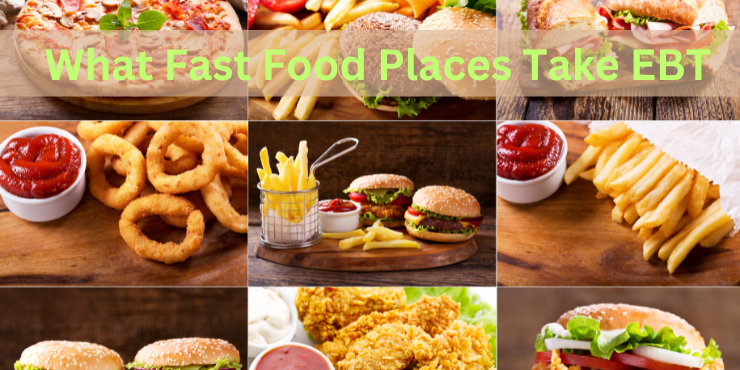What fast food places take EBT? This inquiry delves into the evolving landscape of food assistance and consumer preferences, highlighting both the benefits and considerations associated with EBT usage at fast food establishments. By exploring this topic, we aim to understand the implications for individuals relying on EBT benefits and the broader implications for public health and welfare.
Understanding EBT
EBT, or Electronic Benefit Transfer, is a system that allows recipients of government assistance, such as the Supplemental Nutrition Assistance Program (SNAP), to access their benefits electronically. These benefits are loaded onto a debit card, which recipients can use to purchase eligible food items at authorized retailers.
Fast Food and EBT
While EBT is primarily intended to help low-income families afford groceries, there are certain circumstances in which EBT benefits can be used at fast food establishments. This is particularly beneficial for individuals who may not have access to cooking facilities or who rely on fast food due to time constraints or mobility issues.
Fast Food Chains Accepting EBT
Not all fast food chains accept EBT, but there are some notable exceptions. Among the popular chains that do accept EBT are Subway, Domino’s Pizza, and KFC. However, it’s essential to note that acceptance policies may vary depending on location and franchise ownership.
Health Implications
The use of EBT benefits at fast food restaurants raises concerns about the nutritional quality of the food being purchased. Fast food is often high in calories, sodium, and unhealthy fats, which can contribute to obesity and other health problems, particularly among low-income populations.
Community Impact
The acceptance of EBT at fast food establishments can also have broader social and economic implications for communities. While it may provide a convenient option for individuals in need, it can also contribute to the proliferation of fast food outlets in low-income neighborhoods, further exacerbating issues of food insecurity and health disparities.
How to Use EBT at Fast Food Places
Using EBT at fast food restaurants is similar to using it at grocery stores. Customers select eligible items from the menu and pay with their EBT card at the register. However, it’s essential to check with individual restaurants to ensure they participate in the RMP and accept EBT.
List of Fast Food Chains That Accept EBT
Several fast food chains participate in RMPs and accept EBT as a form of payment. Some of these include:
- McDonald’s
- Subway
- Papa Murphy’s
- Kentucky Fried Chicken (KFC)
- Burger King
- Domino’s Pizza
- Taco Bell
- Jack in the Box
- Carl’s Jr.
- Pizza Hut
Benefits and Drawbacks of Fast Food EBT Acceptance
Benefits
- Increased access to food for individuals with limited options
- Convenience for those without access to cooking facilities
- Potential for healthier menu choices at participating restaurants
Drawbacks
- Concerns about the nutritional quality of fast food
- Limited selection of healthy options at some establishments
- Potential for misuse or abuse of benefits
Benefits and Challenges
The acceptance of EBT at fast food places has both advantages and challenges. On one hand, it provides individuals with limited cooking resources or transportation options access to hot meals. However, critics argue that this can contribute to poor dietary choices and perpetuate health issues associated with fast food consumption.
Conclusion
Fast food places that accept EBT play a significant role in addressing food insecurity among low-income individuals and families. While the practice has its benefits, including increased access and convenience, it also raises questions about nutrition and the broader implications for public health and welfare.

Hello, my name is Lora J Fusco, and I am a passionate chef with a wealth of experience in the culinary world. I am not in the kitchen making meals. I love to share my insights and adventures by writing on my blog.
Food and cooking are not just my job but also my passion. I am thrilled to have the chance to connect with you through my writing. Welcome to my space, and I hope you enjoy exploring the wonderful world of food with me!
